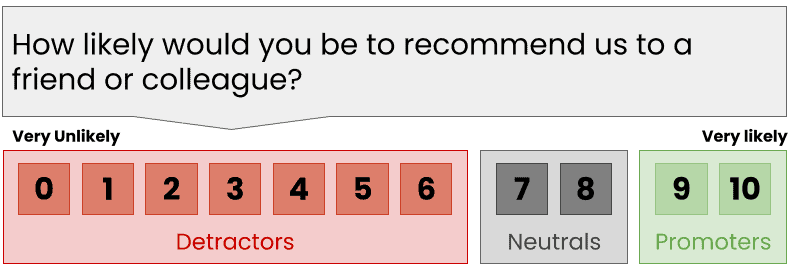Measuring customer experience is essential for any business looking to improve customer satisfaction and loyalty.
In this ultimate guide, we’ll dive deep into the world of CX measurement, covering:
- What CX measurement is and why it matters
- The top customer experience metrics to track
- How to choose the right CX metrics for your business
- CX measurement best practices to follow
- And much more
I’ve been helping companies optimize their CX measurement strategies for over two decades. And I can tell you first hand – effective measurement is the foundation of any successful CX program.
Whether you’re just getting started with CX or looking to take your current approach to the next level, this guide will give you the insights and actionable tips you need.
So if you’re ready to unlock the full potential of CX measurement, let’s dive in.
Understanding Customer Experience Measurement
What is Customer Experience Measurement?
Customer Experience Measurement is the process of quantifying how your customers perceive their interactions with your company.
It involves collecting data on key metrics that reflect the customer’s sentiment, loyalty and overall experience across various touchpoints.
Benefits of effective CX measurement
Measuring CX is important because without a clear understanding of your current CX performance, it’s impossible to know where you need to improve.
Effective measurement allows you to identify pain points, prioritize initiatives, track progress over time, and ultimately prove the ROI of your customer experience efforts.
Some of the key benefits I’ve seen from a robust CX measurement approach include:
- Improved customer retention and loyalty
- Increased cross-sell/upsell opportunities
- Reduced customer churn
- Lower cost to serve
- Positive word of mouth and referrals
Beyond the business impact, CX measurement is just the right thing to do from the customer’s perspective. It shows that you value their opinion and are committed to meeting their needs.
The bottom line is that you can’t manage what you don’t measure.
Investing in CX measurement is a critical step for any company looking to differentiate on customer experience. By understanding what to measure, how to capture feedback, and most importantly how to act on those insights, you’ll be well positioned to drive meaningful improvements in customer satisfaction and loyalty.
Key Customer Experience Metrics
Let’s explore some of the most critical metrics you should be tracking.
The specific metrics you choose may vary based on your industry and business model. But in general, I believe this combination of relationship surveys (NPS), transactional surveys (CSAT, CES), and operational metrics (CLV, Retention, etc.) gives you a well-rounded view of CX performance.
The key is to not just track these metrics, but to truly understand what’s impacting each one. That’s where techniques like driver analysis, root cause analysis, and journey analytics come into play.
By focusing on the right metrics and continuously working to improve them, you can create a virtuous cycle of increased loyalty, retention and growth. And you’ll have the data to prove the impact of your CX efforts on the business.
Net Promoter Score (NPS)
One of the most widely adopted CX metrics is the Net Promoter Score or NPS.
NPS measures the likelihood of a customer recommending your company to others. It’s based on a simple 0-10 scale question and categorizes respondents into Promoters, Passives and Detractors. Subtracting the % of Detractors from the % of Promoters gives you your NPS score. It’s a great high level indicator of customer loyalty.

Customer Satisfaction Score (CSAT)
Another common metric is Customer Satisfaction or CSAT. This measures how satisfied a customer is with a specific interaction, typically on a 1-5 scale from Very Dissatisfied to Very Satisfied.
CSAT gives you more granular, touchpoint-level feedback to identify specific areas to improve but it has been shown to be a less effective predictor of customer loyalty than NPS.

Customer Effort Score (CES)
Customer Effort Score (CES) has gained popularity in recent years as well. CES looks at how easy or difficult it was for the customer to accomplish their goal, whether that’s resolving an issue, making a purchase, etc.
Reducing customer effort has a huge impact on loyalty.

Customer Lifetime Value (CLV)
NPS, CSAT, CES help you understand different dimensions of the customer experience. But it’s also critical to tie CX to tangible business outcomes.
That’s where metrics like Customer Lifetime Value (CLV), Retention Rate and Churn Rate come in.
CLV projects the total revenue a customer will generate over their lifetime.
Customer Retention Rate / Customer Churn Rate
Customer Retention and Churn look at the percentage of customers you keep vs lose over time.
Improving these metrics directly impacts your bottom line.
First Contact Resolution (FCR)
Two other metrics I often recommend tracking are First Contact Resolution (FCR) and Average Resolution Time (ART).
FCR measures the percentage of customer issues that are resolved on first contact, while ART looks at the average time to resolve an issue. Both of these have a big impact on customer effort and satisfaction.
Average Resolution Time (ART)
ART looks at the average time to resolve an issue.
Choosing the Right CX Metrics for Your Business
When choosing the right CX metrics for your business, it’s crucial to align them with your overall goals and objectives. The key is to select metrics that will provide actionable insights and drive meaningful improvements in the customer experience.
CX metrics should also evolve over time. As your business goals change and you uncover new insights, be willing to adjust your approach. Regularly review your metrics to ensure they are still aligned with your priorities and driving meaningful action.
Choosing the right CX metrics is both an art and a science. By aligning with business goals, focusing on actionable insights, setting clear targets, democratizing data, and blending different types of feedback, you can create a powerful framework for driving CX improvements. The key is to turn metrics into action and continuously optimize based on what you learn.
Align Customer Journey and CX Metrics
One important consideration is to map your metrics to the customer journey.
This means measuring NPS, CSAT, and CES at key touchpoints to get a holistic view of the experience. By understanding how these metrics perform at different stages, you can pinpoint specific areas for improvement.
In these case studies of a contact centre environments the leadership team picked specific metrics that aligned with what drives their NPS at that touchpoint.
Based on their driver analysis one organisation selected First Contact Resolution as the most important CX metric but the other choose Speed of Answer.
Goals, Targets and Benchmarks
It’s also essential to set clear targets and benchmarks for your CX metrics. This gives you a clear goal to work towards and helps you track progress over time.
Benchmarking against industry peers can provide valuable context for your performance but it is often difficult to find accurate data.
It can be much more productive to use your own internal scores from the past month or quarter as a benchmark.
Fewer CX Metrics is Better
When selecting metrics, it’s important to focus on quality over quantity.
Measure a few things really well, rather than trying to track every possible metric. Avoid “metric overload” by honing in on the key indicators that matter most to your business.
This applies particularly to collecting NPS, CSAT and CES data. Using multiple CX metrics that seem to measure the same thing can create confusion and lead to internal discussions and disagreements.
Focusing on one direct CX metric allows for better clarity and more effective decision-making.
Combining operational data with survey feedback is another powerful approach. By blending quantitative metrics with qualitative insights, you get a more nuanced understanding of the customer experience.
This allows you to identify not just what is happening, but why it’s happening.
CX Measurement Best Practices
There are many measurement best practices to consider:
- Combining relationship and transactional metrics for a holistic view
- Leveraging text analytics and sentiment analysis to uncover insights in unstructured feedback
- Integrating CX data with operational data to understand drivers and root causes
- Closing the loop with customers to show you’re listening and taking action
The most successful companies don’t just measure CX – they obsess over it. They constantly seek out new insights, experiment with new approaches, and iterate based on what they learn.
Connect CX Metrics to Business Outcomes and ROI
One of the most critical aspects of an effective CX measurement strategy is linking metrics to tangible business outcomes and return on investment (ROI).
While improving customer satisfaction is a worthy goal in itself, the real value comes from proving the bottom-line impact of those efforts. CX metrics can’t exist in a vacuum – they need to be tied to the metrics that matter most to the business.
For some companies, that might be revenue growth. For others, it could be cost reduction or employee engagement.
The specific metrics will vary, but the principle remains the same: CX initiatives must demonstrate tangible value.
Forging these connections often requires close collaboration between CX teams and other departments, especially finance. It may involve complex modelling and data analysis to untangle the relationships between customer sentiment and behaviour.
But the effort is well worth it.
At Wolters Kluwer – their CFO became a huge supporter of the CX program because he was shown the link between NPS and growth.
…there was certainly a correlation between increasing feedback from customers and increasing scores and financial growth.
Jon James (CFO and COO Wolters Kluwer Asia Pacific)
When CX teams can show that a 10-point increase in NPS translates to a 5% boost in revenue, or that reducing customer effort saves $1 million in support costs, they gain credibility and clout within the organisation.
CX shifts from being a “nice to have” to a core driver of business success.
More importantly, linking CX to business outcomes helps ensure that improvement efforts are focused where they’ll have the greatest impact. Teams can prioritize initiatives based not just on what customers are asking for, but on what will move the needle for the company as a whole.
In the end, the most successful CX programs are those that can consistently prove their worth. By connecting CX metrics to the bottom line, companies can justify continued investment, rally organization-wide support, and keep the focus on what matters most: delivering experiences that delight customers and drive business results.
Share Data Transparently
Another best practice is to democratise your CX data across the organisation.
By giving employees at all levels access to customer feedback and metrics, you create a culture of customer-centricity. Everyone from the frontline to the C-suite should understand how their day-to-day work impacts the customer experience.
This has the added benefit of empowering front line staff who are often that most able to make the many small changes needed to incrementally move the business forward.
Select Your North Star CX Measurement
While it’s important to track a range of metrics, having a single “North Star” metric can help align the organization and drive clarity of purpose. For most companies, this core metric will be NPS, CSAT, or CES.
NPS is a great choice if your main goal is to increase loyalty and advocacy. CSAT works well if you want to optimize specific touchpoints and interactions. And CES is ideal if reducing customer effort is a top priority. The key is to choose the metric that best aligns with your overall CX strategy.
Once you’ve selected your core metric, it’s critical to measure it consistently over time. This allows you to track progress, identify trends, and gauge the impact of your CX initiatives. Whether you report monthly, quarterly, or annually, the key is to maintain a regular cadence.
Distinguish Signal from Noise in your Customer Experience Measurement
Another important best practice is to distinguish signal from noise in your CX data.
Not every fluctuation in your metrics is meaningful. By using techniques like statistical significance testing and driver analysis, you can separate the true insights from the random variation.
This helps you focus on the areas that will have the biggest impact and avoid reacting to false positives. It also helps you select targets that are achievable.
Case Studies – Customer Experience Metrics in Action
Here are some example of companies that leveraged metrics and analytics to improve the customer experience and drive business results.
What these case studies demonstrate is the power of diving beneath the top-line NPS to uncover the specific CX metrics and processes that matter most. By focusing on a combination of perception-based metrics (NPS, CSAT) and operational KPIs (resolution rates, handle times), these companies linked their CX measurement frameworks directly to concrete improvements.
The other key takeaway is the importance of taking action on the insights surfaced by CX metrics. Measurement for measurement’s sake is futile – it’s what you do with the data that counts.
As these examples show, a focus on continuous improvement, root cause analysis, and company-wide engagement is what turns numbers into real CX success.
FleetPartners
FleetPartners formed a dedicated CX forum to analyse a comprehensive Voice of Customer (VoC) report each month, including:

- NPS scores
- Customer complaints
- CX drivers and their impact on NPS
- Root cause analysis data
- Closing-the-loop performance against KPIs
This rich dataset allowed the forum to make informed, data-driven decisions to continuously enhance the customer experience.
Zip Water UK
Zip Water UK’s impressive NPS increase from +2 to +73 was driven by several key factors:
- Transactional and relationship NPS surveys to gather a holistic view of CX
- Focus on identifying and addressing root causes of detractors
- NPS analyzed at a granular level to pinpoint specific improvement areas
- NPS treated as a company-wide goal, not just a contact center metric
- NPS not tied to individual rewards to avoid ‘gaming’ the system
Instead of fixating on the metric itself, Zip used NPS as a starting point for action. When scores dipped, they dug into the data to understand why and made swift changes. This approach kept the entire organization focused on continuously improving the customer experience.
AccessPay
To lift their NPS from 15 to 50 in two years, AccessPay focused on specific CX metrics within their control:
- First Contact Resolution rates
- Average Handle Time
- Speed of answer
- Consistency of service
AccessPay realised these operational metrics were the key drivers of customer satisfaction and set out to improve them through better processes, training, and tools.
Importantly, they didn’t just track NPS – leadership reviewed customer comments daily to understand the ‘why’ behind the score and identify areas for improvement or praise.
Carlson Restaurants

Carlson’s journey with NPS yielded four key insights that guided their CX measurement and improvement efforts:
- NPS Threshold: Carlson discovered that there was a critical NPS threshold above which improvements in the score correlated with significant gains in revenue and profits. Below this threshold, NPS improvements had minimal business impact. This insight highlighted the importance of not just tracking NPS, but aiming for a specific, company-relevant level of performance.
- Consistency: Locations that consistently met or exceeded the NPS threshold outperformed those with volatile scores. To track this, Carlson monitored:
- Rolling 3-month NPS: To gauge overall performance and consistency
- Monthly NPS: To diagnose issues and take real-time action
This approach ensured a focus on sustained excellence rather than one-off achievements.
- Linkage to Business Metrics: Carlson found that once locations surpassed the NPS threshold, a host of other business metrics fell into place, including:
- Revenue growth
- Traffic volume
- Profitability
- Cost control
- Employee turnover
- Employee engagement
This “grand theory of everything” insight proved the far-reaching impact of customer satisfaction and helped solidify organizational buy-in for the NPS program.
- Driver Analysis: Rather than trying to directly manage NPS, Carlson focused on the underlying drivers of the score. They used rigorous analysis to whittle down their initial survey to the core questions that mattered most. They discovered that key service attributes, like food and service quality, were the biggest influencers of NPS.
Armed with this knowledge, Carlson redesigned their training programs and service standards to focus on these key drivers. They set behavior-based goals for staff rather than NPS quotas, recognizing that moving the metric was a result of delivering great experiences.
Carlson’s story underscores the power of NPS when it’s thoughtfully integrated into a broader CX strategy. By setting thresholds, tracking consistency, linking to business outcomes, and focusing on key drivers, they turned a metric into a transformational tool.
Their experience also highlights the importance of patience and persistence in CX measurement. It took time for Carlson to uncover these insights and even longer to embed them into the organization. But by staying the course and continually learning from the data, they were able to drive significant, sustained improvements in both customer satisfaction and business performance.
Get the Business Leader's Guide to Net Promoter Score Download Here








